One year since the bloody siege of Zamboanga City, Rappler sits down with soldiers of the Light Reaction Battalion who have stories to tell and lessons to share
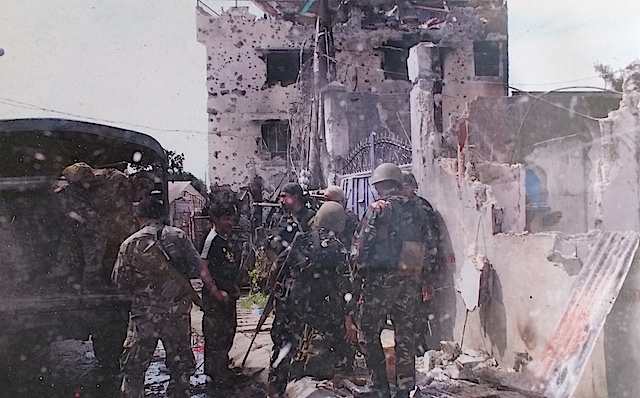
For several days government troops waited as negotiators exhausted means to end the Zamboanga siege peacefully. By the time the soldiers were ordered to mount a counter-attack, however, they were already faced with a complex combat zone where rebels had taken hostages and entrenched themselves in key defensive positions.
Soldiers by the
codename "Venom," "Dark Knight," "Karambit," and
"Wild Orchid" remember everything that transpired in Zamboanga City
On September 9,
2013, close to 500 members of the Moro National Liberation Front (MNLF) attacked the city to protest what they considered
was government's failure to fulfill the provisions of the peace agreement that
the MNLF signed with the Ramos administration in 1996.
Government troops
fought back in what would turn out to be the Philippine military's biggest
operation in recent history. What followed was a fierce battle that stretched
for 3 weeks, killed 19 government forces and 208 rebels, and dislocated 24,000
families. (READ: Zamboanga
siege: Ground zero a year after)
A year after the
siege, Rappler sat down with the elite troops from the Philippine military's
anti-terrorist Light Reaction Battalion (LRB) at their headquarters in Nueva
Ecija, where they recalled the siege that tested their wit and mettle.
Created in 2001
after the 9/11 terrorist attacks in the US
Target:
KGK
The first challenge
for the LRB was the KGK
Building Lustre street
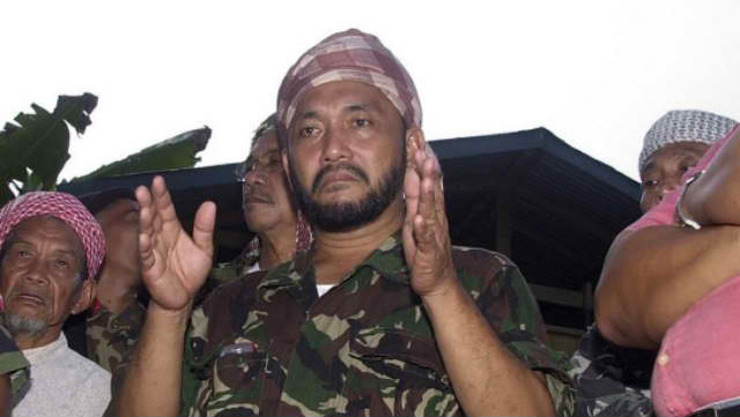
MNLF Commander Habier Malik.
Trained for surgical operations, the LRB troops planned to attack the KGK building. But there was a hitch: they didn't have the floor plan and they lacked enough information on rebel strength and position.
"Wala
kaming floor plan. Pero sabi ng tropa: Sir, kailangan kunin na
natin ito (We didn't have a floor pan. But the troops said: Sir, we should
take this already)," recalled LRB commander Colonel Teodoro Llamas.
They found a
short route from the back of a hospital compound. The plan was to approach the
wall of KGK, bore a hole in the wall, force their way in, surprise the rebels
and free the hostages.
It was easier
said than done. The plan exposed them to an open terrain and a swampy area.
They had to crawl under the cover of darkness, relying on government snipers
and machine gunners who would open fire at rebel positions from the roof of the
nearby Zamboanga City Medical
Center
The troops
eventually reached the wall and bore a hole in it while dodging bullets from
the enemy side. It was about 2 am.
"Kung
hindi lang sa kasamahan namin nakikipagputukan, katay na kami doon. High risk
ang ginawa namin. Medyo suicidal yun e (If it weren't for the others
who were engaging the rebels, we would have been massacred. It was a high-risk
operation. It was suicidal.)," recalled "Dark Knight," one of
those who led the approach.
But it turned out
it's not the wall they needed. "Hindi namin mapasok kasi yung pader
pala na papasukan namin swamp. Tapos walang access sa mismong
[KGK]. Hindi namin alam 'yung floor plan. Walang access (We
coudn't enter because the wall was in a swampy area. It didn't have access to
KGK, too. We didn't know the floor plan. It didn't have access)," recalled
"Venom," one of the company commanders reporting to Llamas.
They had to
retreat to the hospital.
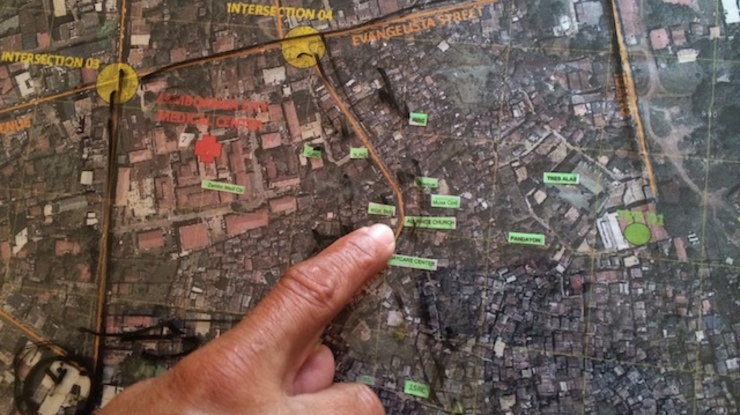
(Close) quarter
battle in the coastal barangays of Zamboanga
City
Mortars, fires, and gun holes
They made a
second attempt to seize KGK after lunch on the same day. But the rebels were
already alerted, waiting for the soldiers to return.
The troops had to
change tactics.
They then went
around the building, moving from one street corner to another in tanks, running
from house to house, hitting walls with mortars.
But the rebels
proved to be well-trained in this type of battle.
"We suspect
that some of them have some sort of a training also. We see styles from Afghanistan or Pakistan
Sometimes the
rebels fired through holes in several layers of walls. It was hard to tell
where the bullets were coming from and harder to see where the hostages were
kept.

And then there was the burning of houses and facilities that forced the troops to stop and prevented them from immediately closing in. Sometimes the troops had to sleep in half-burned houses.
The MNLF rebels
had two advantages in the prolonged firefight: they had food supplies inside
the abandoned houses and they had hostages that they used as shields.
A soldier
dies
On their 3rd
attempt to take KGK, the elite troops suffered their first loss. They watched
Corporal Michael Baltazar fall after a surprise attack from a rebel who
suddenly appeared from a sewer.
Some of the men
couldn't help their tears while they were engaging the enemies. “Kinuha ko
ang baril ni Baltazar. Dalawa na gamit ko. Sinabihan ako ng CO
(commanding officer) ko na “Kalma ka lang, brother.” Sa isip ko,
gusto ko na talaga pasukin KGK (I took Baltazar's firearm and was
firing 2 rifles. My commanding officer had to tell me to calm down. In my mind,
I wanted to enter KGK),” "Wild Orchid" recalled.
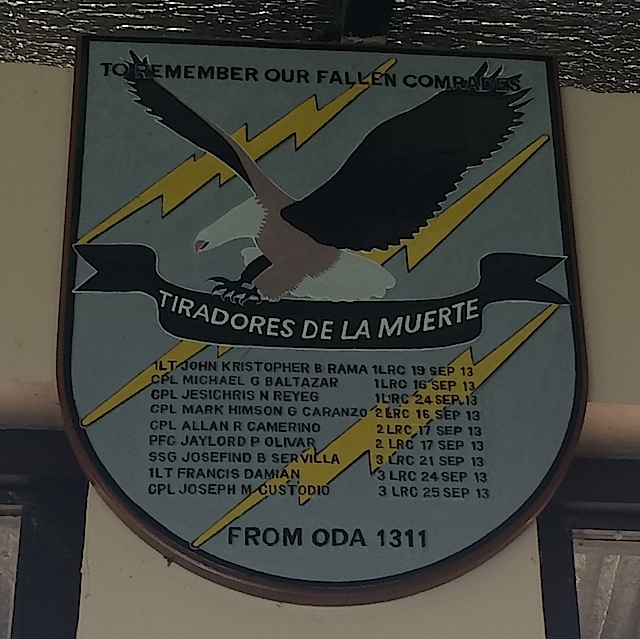
9 LRB troops were
killed
"Venom" was wounded, too. A shrapnel hit his left hand and he bled profusely. Llamas had to order a master sergeant to drag "Venom" him by the collar to a tank that brought him to the hospital.
It would take 5
difficult advances until the troops were able to take the building. But by
then, the rebels had fled with their hostages.
On September 18,
the troops raised the flag on the roof of KGK and sang the national anthem. But
this did not mean the end of the crisis; it only meant the rebels were deprived
of a fortified base.
The soldiers
continued to pounce on the rebels until they cornered them in a small area.
Hard lessons
Looking back,
some of the troops say they should have made their move on Day 1, when one
company of Light Reaction troops had the vantage point in a building where they
could see the rebels marching with their hostages.
But the soldiers
could not do anything. For the first 4 days they were paralyzed by negotiations
held between government representatives and rebel emissaries for the peaceful
surrender of Malik's followers.
The soldiers told
Rappler that during those days they played the battlefield in their minds; they
would shoot the enemy, rescue hostages, show immense firepower. But it was
tough to fight an imaginary war. When they got impatient, one officer mustered
the courage to seek permission to attack. He was rejected.
The go-signal
would come only the 5th day, September 13 (Friday the 13th), after President
Benigno Aquino III arrived in Zamboanga
City
By then the
rebels had taken defensive positions and camped at the KGK with hostages,
putting government troops at a disadvantage.
Worse, the troops
were given two – but somewhat complex – orders: rescue the hostages and
neutralize the enemy. They were two different missions that required different
firearms and approaches. “Ano ba talaga sir?,” junior commanders would
ask Llamas. He told them the priority was the safety of the hostages.
Small team
Llamas lost 9 men
in the Zamboanga siege. He said he feels guilty that he was unable to visit
their graves more often.
He also remembers
considering to beg off from the operation. "Technically, we were
non-operational. Our unit was not filled up," he said. The military has
always estimated their number to be 300 but, in fact, they are much smaller.
The Zamboanga operation seemed too big for the small unit.
But Llamas also
knew he couldn’t say no.
The troops also
felt it was a "once-in-a-lifetime" operation cut out for them.
They've rescued hostages before and have surprised terrorists in their
encampments, but there was nothing like the magnitude of Zamboanga City
"It was the
real world. It's no longer training," said Wild Orchid, 42, who
joined LRB in 2003.
The crisis would
drag for 21 days, too long for a unit that is trained to finish a job in 3
days. In the end, the combat zone was razed to the ground.
The LRB would get
help from a company of Navy Special Operations Group (NAVSOG), the equivalent
of the US Navy Seals, whose training was closest to the LRB except their
expertise is water. The LRB and the Navsog both fall under the Joint Special
Operatios Group (JSOG) under the command of Colonel Danilo Pamonag. (READ: 'The first to respond, the last to leave')
The Scout
Rangers, too, helped. They occupied the frontlines when the LRB needed to rest.
Surrounding them
were over 2,000 other troops. The Air Force brought in soldiers from the
different units nationwide. They conducted air strikes and took snapshots of
the battlefield. The Navy guarded the shorelines and the mangroves, while the
rest of the Army protected the perimeter of the combat zone.
Everyone made
sure that the rebels couldn't escape and they couldn't be reinforced.
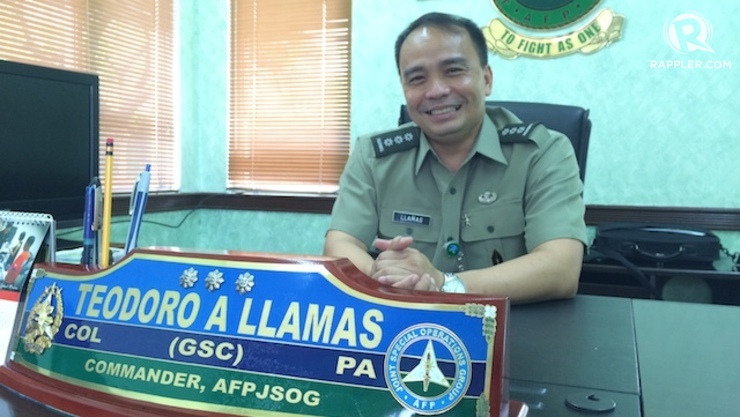
Deaths and injuries
In the hospital,
"Venom" made sure he was released immediately when he learned that
his platoon leader also died in combat. He wanted to return to his troops but
Llamas said no. Llamas was planning to assign another officer to take Venom's
place as company commander.
Llamas recalled
how an angry "Venom" stared at him when he received the orders. The
battalion commander stared back at the junior officer. Nobody said a word until
"Venom" teared up.
Llamas is
laughing now but it was no laughing matter back then. "Parang drama e.
Kung gagawin mong cartoons yun at may talk bubble, ang sinasabi
niya sa akin: P@*!!#!! mo, sir. Huwag mong gawin sa akin ito (It was
so dramatic. If there was a talk bubble there, he was tell me: [Expletives]
Please don't to this to me)."
"Wala
akong magagawa. Naging company commander din ako. I know how he
feels. Patay platoon leader niya (I couldn't do anything. I was
also a company commander. I know how he feels. His platoon leader died.),"
Llamas added.
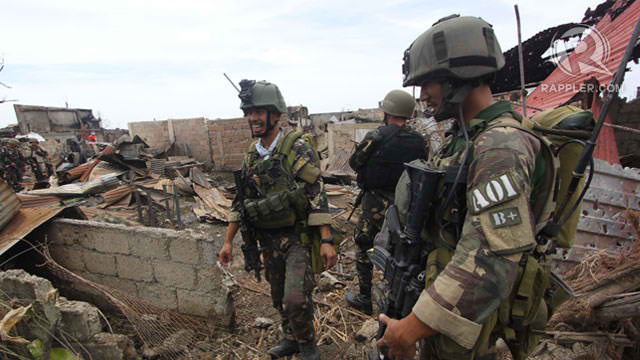
READ: PH to double size of elite anti-terror troops
Llamas allowed "Venom" to return to his men. “P@*!!#!!, pumunta ka na. Kapag na-infect ang sugat mo ako mismo ang papatay sayo! ([Expletives], go! If your wound gets infected, I will kill you myself.)”
They could afford
to laugh now. But what if another siege of that magnitude happened again?
"We're more ready," Llamas said.
http://www.rappler.com/newsbreak/68885-zamboanga-siege-light-reaction-battalion

No comments:
Post a Comment
Note: Only a member of this blog may post a comment.